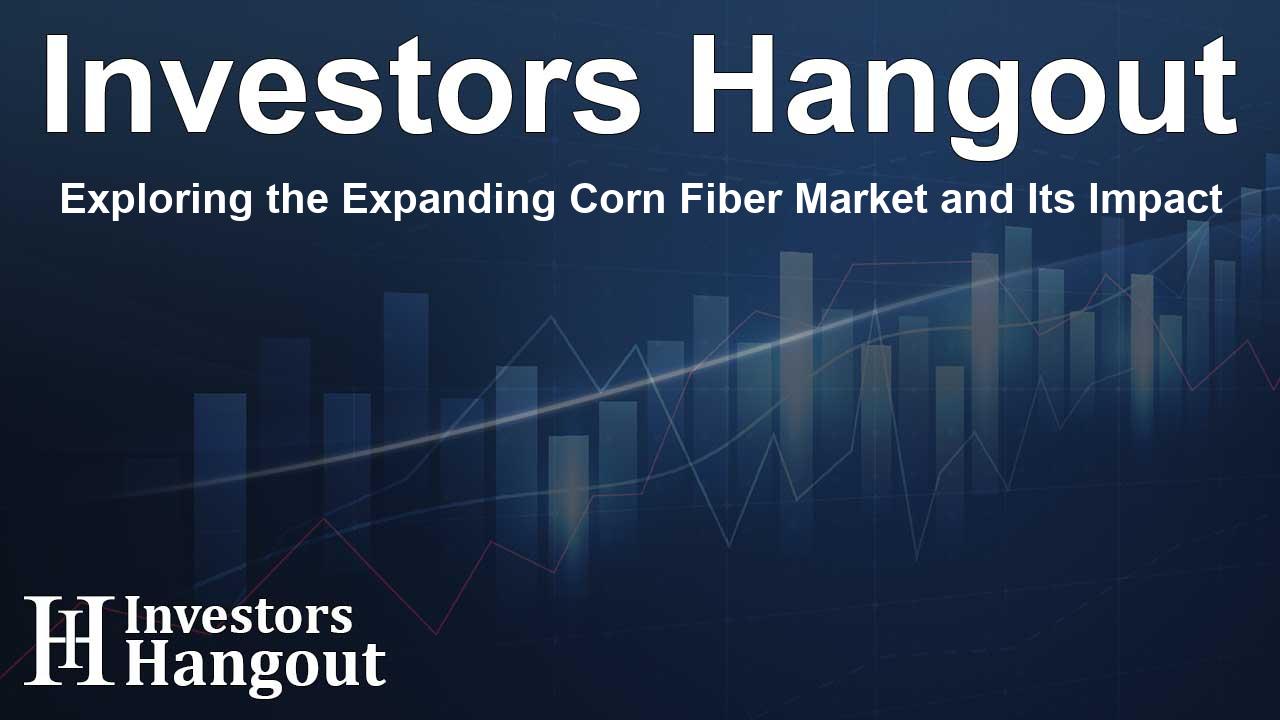Exploring the Expanding Corn Fiber Market and Its Impact

Introduction to the Corn Fiber Market
The corn fiber market is on a remarkable ascent. Currently valued at approximately US$ 680 million, it is projected to reach US$ 2,190 million in the coming years. This explosive growth is attributed to a compound annual growth rate (CAGR) of 15.50%, confirming the increasing consumer preference for sustainable products and the numerous applications of corn fiber in diverse sectors.
Drivers of Growth in the Corn Fiber Market
As the demand for natural and eco-friendly materials escalates, the corn fiber market experiences a surge. One of the primary catalysts for this growth is the rising consumer awareness regarding health benefits linked to corn fiber. This has prompted food and beverage companies to incorporate corn fiber into their offerings as a dietary additive and a healthier ingredient.
Key Sectors Boosting Demand
Several sectors are leading the charge in corn fiber consumption. For example, the renewable energy sector has seen a significant increase, with corn fiber being utilized in biofuel production. The textile industry also shows a positive trend, as many brands shift towards sustainable fabrics, which has led to a rise in corn fiber adoption by 25% in this field.
Innovative Uses Across Industries
The versatility of corn fiber allows it to be used in various industries, making it a valuable resource. For instance, pharmaceutical companies are increasingly incorporating corn fiber due to its hypoallergenic properties, which have pushed usage up by 20%. Additionally, in animal feed, the adoption of corn fiber has increased by 22%, providing a cost-effective feed option.
Technological Advancements Driving Market Dynamics
Technological innovations have played a crucial role in optimizing corn fiber production. Enhanced extraction techniques have increased efficiency and purity. For example, biotechnology has developed corn varieties with an improved fiber content of up to 20%. These advancements not only elevate product quality but also lower production costs, making it more competitive in the market.
Environmental Sustainability and Regulatory Support
Governments around the globe are emphasizing sustainability, creating favorable conditions for corn fiber's growth. In particular, the federal subsidies and policies that promote bio-based materials in the U.S. stimulate corn fiber production. Moreover, initiatives like the European Union’s Green Deal have encouraged the use of biodegradable materials, further catalyzing corn fiber's adoption.
Regional Demand Patterns and Market Dynamics
Demand for corn fiber varies significantly across regions, influenced by local consumer preferences and regulations. The United States remains the largest consumer, but significant growth is also observed in emerging markets like China and India, where industrialization is driving consumption. For example, India's corn fiber usage has risen by 17%, influenced by its booming pharmaceutical and textile sectors.
Competitive Landscape and Key Players
Several key players are shaping the corn fiber market. Archer Daniels Midland Company has invested heavily in research and product development. General Mills is actively incorporating corn fiber into new product lines, while Tate & Lyle is exploring AI technologies to enhance production processes. These strategic initiatives are key to adapting to the shifting market and consumer demand.
Emerging Trends Shaping the Future
Looking ahead, the corn fiber market appears poised for continued expansion. Anticipated innovations and the increasing emphasis on health and sustainability will likely drive further growth. For instance, the renewable energy sector expects a 35% increase in corn fiber utilization, indicating its importance in addressing global energy demands.
Conclusion
In conclusion, the corn fiber market is at a pivotal point, marked by rapid growth and a shift towards sustainable practices. As more industries recognize the potential of corn fiber, investment and innovation will continue to flourish, making it a key player in various sectors.
Frequently Asked Questions
What is the current valuation of the corn fiber market?
The corn fiber market is currently valued at approximately US$ 680 million.
What is driving the growth of the corn fiber market?
The growth is driven by rising consumer awareness of health benefits and increasing demand for sustainable products across various industries.
How does technological innovation impact corn fiber production?
Technological advancements improve extraction methods, enhance product quality, and reduce costs, which boosts market competitiveness.
Which industries are the largest consumers of corn fiber?
The largest consumers include the food and beverage sector, textile industry, pharmaceutical sector, and renewable energy sector.
What future trends are expected in the corn fiber market?
Anticipated trends include a focus on sustainability, increasing use in biodegradable materials, and continued innovation in product applications.
About The Author
Contact Henry Turner privately here. Or send an email with ATTN: Henry Turner as the subject to contact@investorshangout.com.
About Investors Hangout
Investors Hangout is a leading online stock forum for financial discussion and learning, offering a wide range of free tools and resources. It draws in traders of all levels, who exchange market knowledge, investigate trading tactics, and keep an eye on industry developments in real time. Featuring financial articles, stock message boards, quotes, charts, company profiles, and live news updates. Through cooperative learning and a wealth of informational resources, it helps users from novices creating their first portfolios to experts honing their techniques. Join Investors Hangout today: https://investorshangout.com/
The content of this article is based on factual, publicly available information and does not represent legal, financial, or investment advice. Investors Hangout does not offer financial advice, and the author is not a licensed financial advisor. Consult a qualified advisor before making any financial or investment decisions based on this article. This article should not be considered advice to purchase, sell, or hold any securities or other investments. If any of the material provided here is inaccurate, please contact us for corrections.
